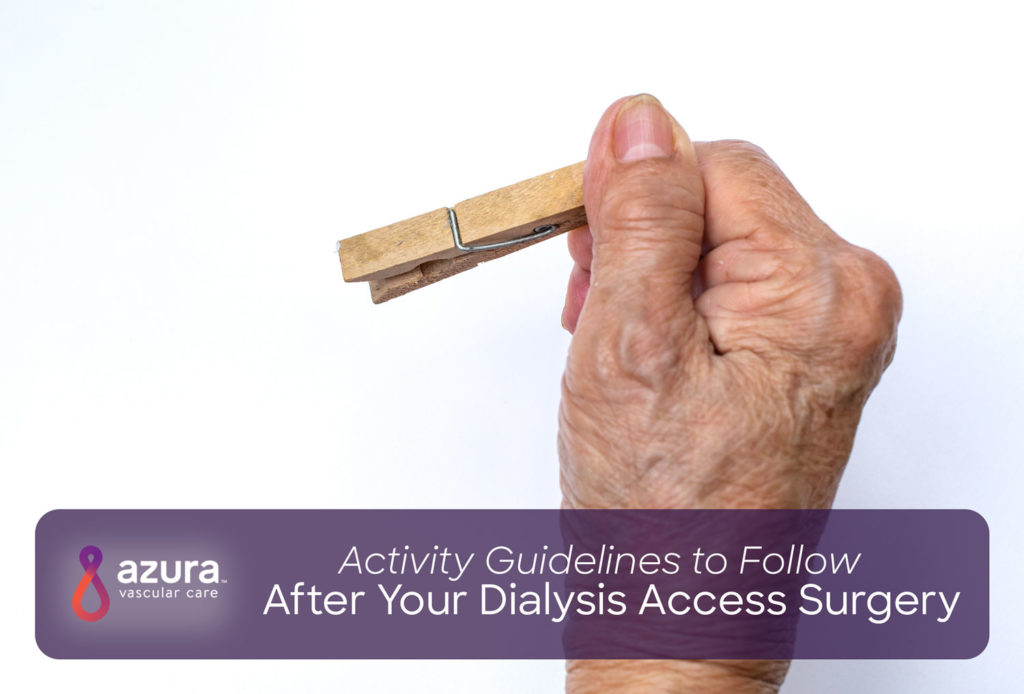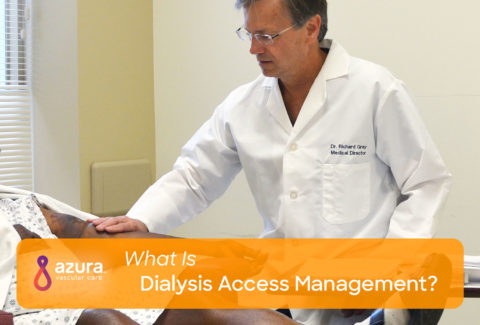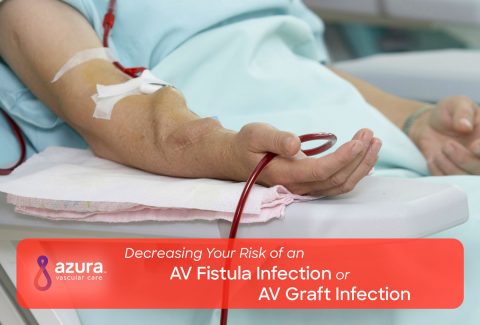
As soon as you start feeling better after your dialysis access surgery to create your new dialysis access, you may be more than ready to dive back into your normal everyday routine. However, you might need to take it easy for just a bit longer to allow your dialysis access site to fully heal. Going back to work or resuming your exercise routine too early can put you at risk for complications such as infection and tearing of your incision.
Have you or a loved one recently had dialysis access surgery? Follow these activity guidelines to protect your access site
What to Expect Immediately After Dialysis Access Surgery
You may experience mild to moderate pain and swelling for the first several days following your dialysis access surgery. Feelings of pain and discomfort are normal and can usually be managed using over-the-counter or prescription painkillers. Your vascular surgeon may advise you to relax and recover at home for a few days and keep your arm elevated above your heart to help reduce pain and swelling. (i)
Many patients start feeling better a few weeks after their surgery. At this time, you may be feeling restless and ready to go back to doing normal activities. Meet with your vascular specialist to confirm that you’re ready to return to work and resume more strenuous physical activities.
Post Dialysis Access Surgery Activity Guidelines for AV Fistula or AV Graft Creation
- Never carry purses, shopping bags, and other heavy items on your access arm, since these items may compress your access when placed over the access site.
- Never wear tight-fitting clothing, bracelets, or elastic bands around your access arm.
- Do not lift items with your access arm that weigh more than 10 pounds for the first three weeks after your surgery. Lifting may put a strain on your incision before it’s fully healed.
- Do not use your access arm to push or pull items such as doors for the first three weeks. (ii)
- Do not sleep on your access arm since this can put pressure on the access and may cause it to clot.
- Do not keep your access arm bent for long periods of time.
- Do not drive or operate heavy machinery until after you have stopped taking prescription painkillers. (iii)
- Avoid strenuous exercise and physical activity of any kind for the first three weeks after surgery, or until your vascular specialist says it’s okay to do so.
Related: Read these 10 tips to help keep your dialysis access site functioning
Post Dialysis Access Surgery Exercises That May Help to Mature and Strengthen Your AV Fistula
It can take anywhere between six and 12 weeks for your AV fistula to mature. (v) Exercises may help your AV fistula develop and strengthen and make dialysis easier for both you and the staff at your dialysis center. (vi)
Start practicing the following exercises one week after surgery.
Ball Squeeze
- Obtain a tennis ball, stress ball, or another soft ball you can hold comfortably in your hand.
- Hold the ball using the hand of your access arm.
- Squeeze the ball between 10 and 15 times per minute for between one and two minutes.
- Perform this exercise between 10 and 20 times per day. This exercise is ideal for those who have an AV fistula in the forearm. (iii)
Clothespin Grasp
- Hold a clothespin in the hand of your access arm.
- Open the clothespin repeatedly for about five minutes.
- Do this exercise six times per day. This exercise is ideal for those who have an AV fistula in the forearm. (vi)
Bicep Curl
- Hold a can of vegetables in the hand of the access arm.
- Make sure your palm and the can are facing up.
- Curl your arm slowly up and down for 10 minutes.
- Perform this exercise six times per day. This exercise is ideal for those who have an AV fistula in the upper arm. (vi)
Our vascular specialists can discuss activity guidelines with you in greater detail following your dialysis access surgery. Azura Vascular Care is devoted to helping you fully understand how to properly care for your dialysis access. Call 866.996.9729 to schedule an appointment with a vascular specialist today.
Sources:
(i) Beth Israel Deaconess Medical Center. (n.d.). What to expect after dialysis access surgery. Retrieved February 24, 2019, from https://www.bidmc.org/centers-and-departments/transplant-institute/dialysis-access-center/after-dialysis-access-surgery/what-to-expect.
(ii) University Health Network. (n.d.). Going home after an AV fistula or AV graft. Retrieved February 24, 2019, from https://www.uhn.ca/PatientsFamilies/Health_Information/Health_Topics/Documents/Going_Home_after_an_AV_Fistula_or_AV_Graft.pdf.
(iii) Beth Israel Deaconess Medical Center. (n.d.). Guidelines for activities after dialysis access surgery. Retrieved February 24, 2019, from https://www.bidmc.org/centers-and-departments/transplant-institute/dialysis-access-center/after-dialysis-access-surgery/guidelines-for-activities.
(iv) University of Colorado Department of Surgery. (n.d.). Peritoneal dialysis catheter placement. Retrieved February 24, 2019, from http://www.ucdenver.edu/academics/colleges/medicalschool/departments/surgery/divisions/transplant/Types-of-Surgery/Dialysis-Access/Pages/Peritoneal-Dialysis.aspx.
(v) University of Colorado Department of Surgery. (n.d.). Hemodialysis access. Retrieved February 24, 2019, from http://www.ucdenver.edu/academics/colleges/medicalschool/departments/surgery/divisions/transplant/Types-of-Surgery/Dialysis-Access/Pages/Hemodialysis.aspx.
(vi) U.S. Department of Veterans Affairs. (2015, May 15). Fistula care: What you should know. Retrieved February 24, 2019, from https://www.pittsburgh.va.gov/dialysis/dialysis_fistula_care.asp.


